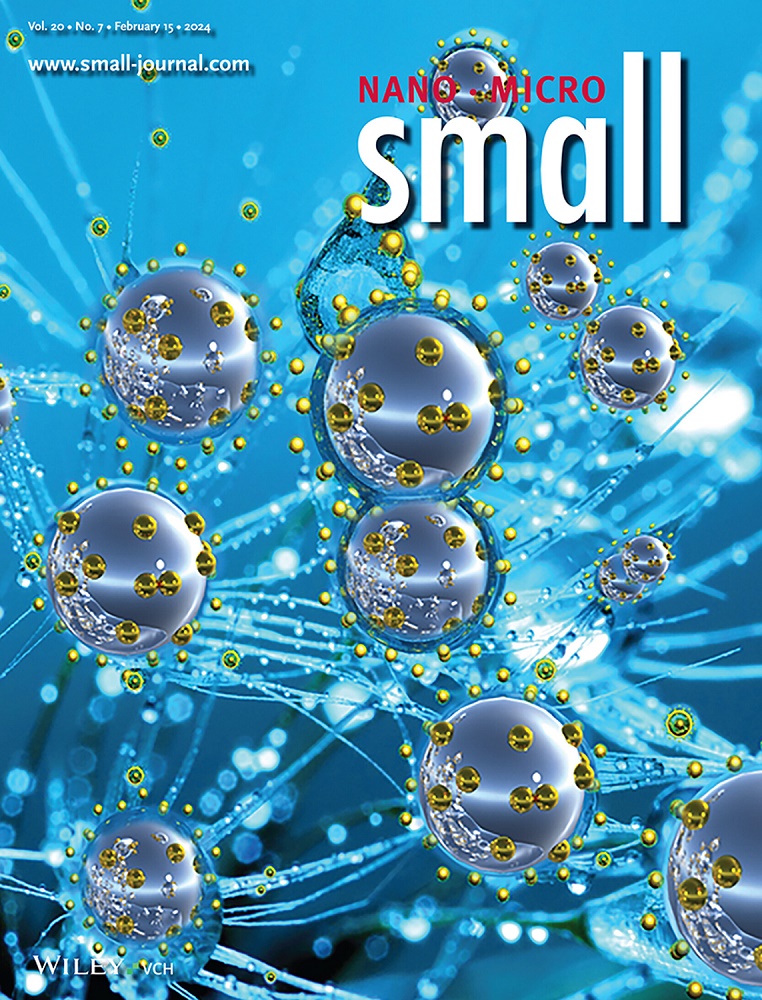Dual Interfacial Engineering of Cracked NiCoP Electrode with Directed Bubbling for Efficient and Stable Hydrogen Evolution
IF 13
2区 材料科学
Q1 CHEMISTRY, MULTIDISCIPLINARY
引用次数: 0
Abstract
Constructing stable electrodes is the premise of practical water electrolysis. Unfortunately, the catalytic performance under industrial conditions encounters critical challenges in bubble dynamics, wherein the violent bubble accumulation not only blocks active sites against reactants but also induces excessive stress upon detachment, leading to catalyst delamination from substrates. Here, a substrate‐strengthened and crack‐configured NiCoP electrode is developed, which features robust catalyst‐substrate binding strength and weakened adhesion at the catalyst‐bubble interface. The precisely engineered dual interfaces enable improved mechanical stability, facilitated bubble desorption, and optimized reaction kinetics for high‐rate hydrogen evolution. The catalyst exhibited an ultra‐low overpotential of 288 mV at 1000 mA cm裂纹NiCoP电极定向鼓泡双界面工程高效稳定析氢
构建稳定的电极是实现水电解的前提。不幸的是,工业条件下的催化性能在气泡动力学中遇到了关键的挑战,其中剧烈的气泡积累不仅阻塞了活性位点对反应物的抵抗,而且在脱离时引起过大的应力,导致催化剂从底物上分层。本研究开发了一种衬底强化和裂纹配置的NiCoP电极,该电极具有强大的催化剂-衬底结合强度和催化剂-气泡界面的弱附着力。精确设计的双界面能够提高机械稳定性,促进气泡解吸,并优化高速率析氢的反应动力学。该催化剂在1000 mA cm - 2下的过电位为288 mV,在200小时内具有稳定的稳定性。此外,当在阴离子交换膜水电解槽(AEMWE)中使用时,在1000 mA cm - 2下记录到最小的电池电压为1.76 V,并稳定运行150小时。这项工作为设计工业绿色氢应用的电极提供了有趣的概念。
本文章由计算机程序翻译,如有差异,请以英文原文为准。
求助全文
约1分钟内获得全文
求助全文
来源期刊

Small
工程技术-材料科学:综合
CiteScore
17.70
自引率
3.80%
发文量
1830
审稿时长
2.1 months
期刊介绍:
Small serves as an exceptional platform for both experimental and theoretical studies in fundamental and applied interdisciplinary research at the nano- and microscale. The journal offers a compelling mix of peer-reviewed Research Articles, Reviews, Perspectives, and Comments.
With a remarkable 2022 Journal Impact Factor of 13.3 (Journal Citation Reports from Clarivate Analytics, 2023), Small remains among the top multidisciplinary journals, covering a wide range of topics at the interface of materials science, chemistry, physics, engineering, medicine, and biology.
Small's readership includes biochemists, biologists, biomedical scientists, chemists, engineers, information technologists, materials scientists, physicists, and theoreticians alike.
 求助内容:
求助内容: 应助结果提醒方式:
应助结果提醒方式:


